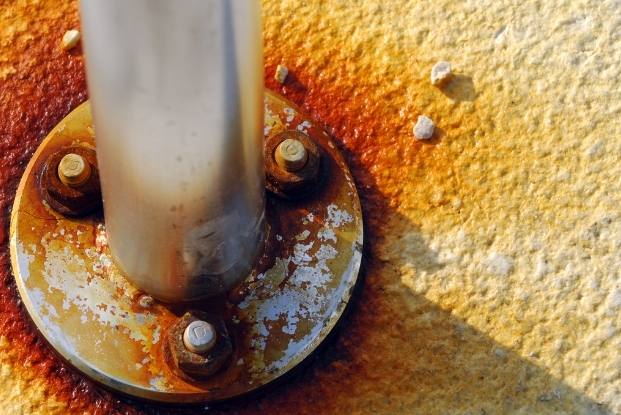CORROSION AND ENVIRONMENTAL CONDITIONING
TEC Eurolab
We carry out corrosion testing and environmental conditioning
Verify the suitability of your materials by testing them in corrosive environments and/or at defined temperatures and humidity

Metallic materials with related treatments and finishes, when exposed to certain atmospheric conditions, may be subject to corrosive phenomena.
Corrosion is a phenomenon of gradual deterioration of a metallic material by interaction with its environment and can be aggravated by factors such as:
- relative humidity
- temperature
- Concentration of the corrosive agent in the environment.
We can conduct corrosion tests according to specific standards in order to test the material’s resistance to certain chemical stresses.
In addition to the corrosion scope, materials and components can be conditioned to certain temperatures and humidity, undergo UV and atmospheric conditioning tests before mechanical, chemical and functional testing.
TESTING AND EVALUATION OF CORROSIVE PHENOMENA
Paint viscosity: efflux hoods – ISO Method 2431
Aluminum alloys corrosion test – ASTM Method G34 (72 hours)
Oxalic acid etch corrosion test pr. a – ASTM Method A262
Ferric sulf.-sulfuric acid corrosion test-120h pr.b – ASTM Method A262
Nitric acid corrosion test 48h-5 cycles pr. c – ASTM Method A262
Cu-cu sulf16%sulfuric acid corrosion test 24h pr.e – ASTM Method A262
Cu-cu corrosion test sulf50% sulfuric acid test 120h pr.f – ASTM Method A262
Corrosion sodium hydroxide etch test – ASTM Method A923 (met a)
Ferric chloride corrosion test 24h – ASTM Method A923 (met c)
Ferric sulf-sulfuric acid corrosion test 24h – ASTM Method G28 (met a)
Ferric sulf-sulfuric acid corrosion test 120h – ASTM Method G28 (met a)
Mixed acid oxidating salt corrosion test 24h – ASTM Method G28 (met b)
Ferric chloride corrosion pitting test 24h – ASTM Method G48 (met a)
Ferric chloride corrosion pitting test 72h – ASTM Method G48 (met a)
Ferric chloride crevice corrosion test 72h – ASTM Method G48 (met b)
Surface contact metallography: iga-igo-egp
Metallography: grain-edge eutectic melting
ENVIRONMENTAL CONDITIONING ANALYSIS
Powders: moisture content – Method EN 1097-5, ASTM D2216
Moisture absorption and condition at equilibrium (every 168 h) – ASTM Method D5229, EN 2823
Hydrogen disbonding conditioning only test – ASTM Method G146
Cupro acetic salt mist – ISO Method 9227
Acetic Salt Mist – ISO Method 9227
Neutral salt spray – ISO Method 9227
Neutral salt spray – ASTM Method B 117
Humidistatic
Climate rooms
Uv condenser
Xenon test
Stove
Chambers: management evaluation final sample documentation
Rooms: machine set up
Thermal shock
Do you need another test?
TEC Eurolab can carry out
the tests you need.
FAQ – CORROSION AND ENVIRONMENTAL CONDITIONING
Faq
Is it possible to check for substances that can promote the occurrence of corrosive phenomena?
The EDS probe, combined with the scanning electron microscope, allows punctual chemical analysis in the areas affected by oxidation, with the aim of assessing the presence of exogenous elements that may play an active role in corrosive phenomena.
Can stainless steels (inox) be affected by corrosion?
A stainless steel may exhibit corrosive phenomena if there is a breakdown or deterioration of the thin layer of chromium oxides that provide protection for the metal alloy, for example, in the presence of some specific ions. Keep in mind that corrosive phenomena, on stainless, are usually more insidious because they occur in a nongeneralized manner and sometimes remain concealed until the component breaks.
TRAINING
TEC Eurolab Academy2023 Scheduled Courses
Are you planning your company’s technical training for the new year?
TEC Eurolab Academy is pleased to share the 2023 CALENDAR, with the rich proposal of technical training offered by TEC Eurolab.